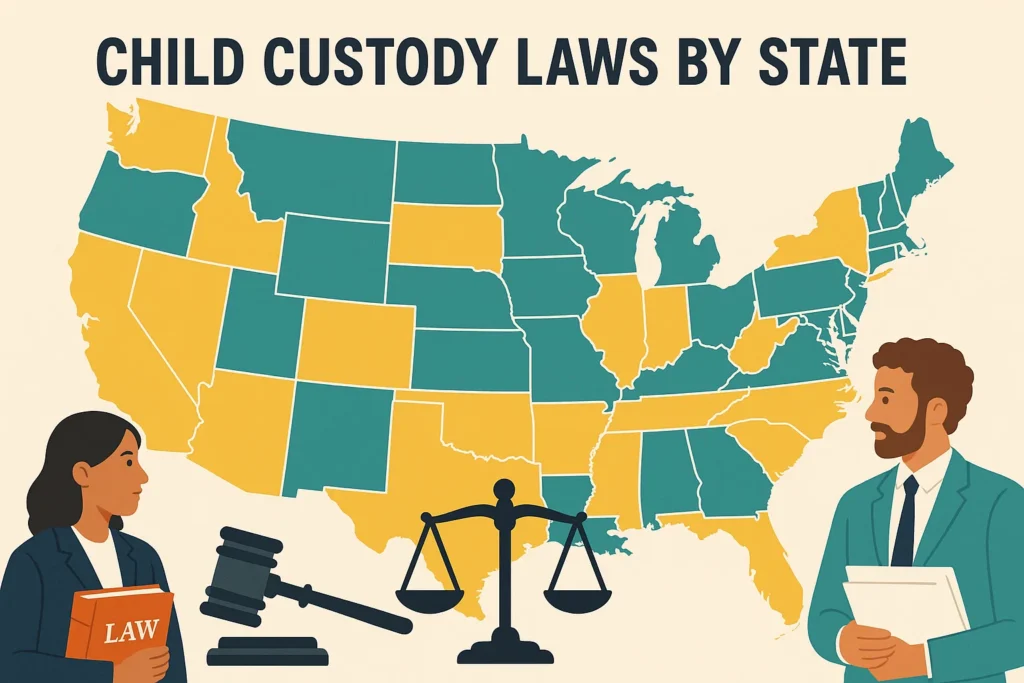Introduction: Navigating the Emotional Road of Custody in Paradise
Child Custody Laws in Hawaii: When parents decide to part ways—whether through divorce or separation—one of the most emotional and legally complex issues they face is deciding who will take care of the children. In Hawaii, just like anywhere else, child custody isn’t just about who the child lives with. It’s about protecting the child’s best interest in a way that honors both parents’ rights while ensuring the child’s overall well-being.
But here’s the thing: understanding custody laws in Hawaii isn’t as overwhelming as it sounds. Whether you’re a local resident of Honolulu, a military family stationed in Pearl Harbor, or someone moving back home to the islands—this guide is crafted just for you.
Table of Contents
The Story That Shaped Custody Law in Hawaii
Back in the early 1990s, there was a custody dispute between a Hawaiian mother and a military father who had recently relocated to the mainland. The case of In re Marriage of Doe vs. Doe (1992) became a turning point in how Hawaiian courts weighed the child’s cultural ties and native Hawaiian identity when deciding custody.
The mother argued that raising the child in Hawaii was crucial to maintaining her connection to Hawaiian culture, language, and extended family. The father, meanwhile, had the financial means and stability but was based out of state.
What made this case unique was how the court considered not just income or living conditions—but cultural continuity and emotional support systems. This helped define Hawaii’s child custody approach as child-centered, focusing on emotional, cultural, and psychological well-being—not just physical placement.
This story remains a guiding light in today’s custody battles in Hawaii, especially when decisions affect native Hawaiian children.
Types of Child Custody in Hawaii
Before filing anything, it’s important to understand the two main custody categories in Hawaii:
1. Legal Custody
This is about who has the right to make major decisions for the child—like where they go to school, their medical care, or religious upbringing.
- Joint Legal Custody: Both parents share decision-making.
- Sole Legal Custody: Only one parent makes the decisions.
2. Physical Custody
This refers to where the child lives and who takes care of their daily needs.
- Joint Physical Custody: The child lives with both parents for significant time.
- Sole Physical Custody: The child lives primarily with one parent, while the other may get visitation.
Hawaii courts prefer joint custody if both parents can cooperate, but will award sole custody if one parent is unfit or if conflict is too high.
How Hawaii Courts Decide Custody (The “Best Interests” Standard)
The central philosophy in Hawaii custody cases is what’s in the “best interests of the child.”
Here’s what the court considers:
- The emotional bond between child and each parent
- Each parent’s ability to provide love, care, and guidance
- The child’s age and health
- Any history of domestic violence or substance abuse
- Stability of the home environment
- Cultural and family connections (especially in Native Hawaiian families)
- Child’s preference (if they’re old enough to express it)
A parent’s gender does not automatically influence the court’s decision—both mothers and fathers have equal rights under Hawaii law.
Step-by-Step Guide to Filing for Child Custody in Hawaii
Let’s walk through the actual process you’ll follow to file for custody, whether you’re unmarried or going through a divorce.
Step 1: Determine the Type of Case
Are you married and divorcing? You’ll file for custody as part of your divorce case.
Are you unmarried? You’ll file a paternity or custody-only petition.
You’ll be working with the Family Court, which handles all custody cases.
Step 2: File the Correct Forms
Depending on your situation, you’ll need to complete one of the following:
- Complaint for Custody (Unmarried Parents)
- Complaint for Divorce with Children
- Petition for Paternity and Custody
You’ll also need to fill out a Proposed Parenting Plan. This document outlines how you and the other parent plan to share custody, visitation, holidays, schooling, etc.
Step 3: File in the Right Court
File your paperwork with the Family Court in the circuit where your child lives. There are four circuits in Hawaii:
- First Circuit: Oʻahu
- Second Circuit: Maui, Molokaʻi, and Lānaʻi
- Third Circuit: Big Island (Hawaiʻi)
- Fifth Circuit: Kauaʻi and Niʻihau
Step 4: Serve the Other Parent
You must officially deliver the court documents to the other parent—this is called serving. You can’t do this yourself; it must be done by a third party (like a sheriff or private process server).
Step 5: Attend Mediation or Custody Hearing
Hawaii encourages mediation before a judge makes a decision. A trained mediator will try to help both parents reach a parenting agreement.
If no agreement is reached, the court schedules a custody hearing, where a judge will evaluate both sides and issue a custody order.
Step 6: Follow the Custody Order
Once the court issues its final judgment, it’s legally binding. Violating the order could result in legal penalties.
Can Children Choose Which Parent to Live With in Hawaii?
Children in Hawaii don’t have an automatic right to choose their custodial parent. However, if they’re mature enough (usually 14+), the court may consider their preferences.
The court always balances this against the child’s best interest. For example, a child may say they want to live with one parent, but if that parent has a history of neglect or violence, the court may override that preference.
Modification of Custody Orders in Hawaii
Life changes, and so can custody.
You can ask the court to modify a custody order if there’s been a significant change in circumstances, like:
- One parent relocating out of Hawaii
- Changes in the child’s needs
- A parent becoming unfit due to substance abuse, mental illness, or violence
To modify, you’ll need to file a Motion to Modify Custody and explain the change in detail. The court will again review what’s best for the child.
What About Visitation Rights in Hawaii?
If one parent gets sole physical custody, the other typically receives reasonable visitation unless it’s unsafe (e.g., due to domestic violence or drug issues).
Visitation plans can include:
- Alternating weekends
- Weekday evenings
- Holidays and school breaks
- Virtual visits (especially for off-island or mainland parents)
Hawaii also recognizes supervised visitation if the child needs protection.
Co-Parenting Tips That Work in Hawaii
Here’s what makes co-parenting work—especially in Hawaii’s close-knit communities:
✅ Use technology like parenting apps to coordinate schedules
✅ Be respectful during exchanges—many custody disputes start over small misunderstandings
✅ Avoid badmouthing the other parent, especially around the child
✅ Stick to the court-ordered parenting plan
✅ Keep the child connected to Hawaiian culture, language, and traditions—it grounds them emotionally
Legal Help for Custody Cases in Hawaii
Need help? Hawaii offers several free and low-cost legal resources:
- Legal Aid Society of Hawaii – Free help for low-income families
- Hawaii State Judiciary Self-Help Centers – Free walk-in legal advice
- Volunteer Legal Services Hawaii – Free clinics and custody workshops
Hiring a family law attorney is recommended for complex cases, especially if there’s conflict or a relocation involved.

Conclusion: You’re Not Alone—Support is Available
Child custody in Hawaii may feel overwhelming at first, but remember—Hawaii’s laws are designed to protect what matters most: your child’s future.
Whether you’re filing your first petition or seeking a custody modification, take it one step at a time. With the right information, legal guidance, and a focus on your child’s best interests, you’ll be on the right path.
The islands have a strong sense of family, tradition, and community. And just like the case that shaped Hawaii’s approach to custody, your case too can be resolved with love, clarity, and fairness.

